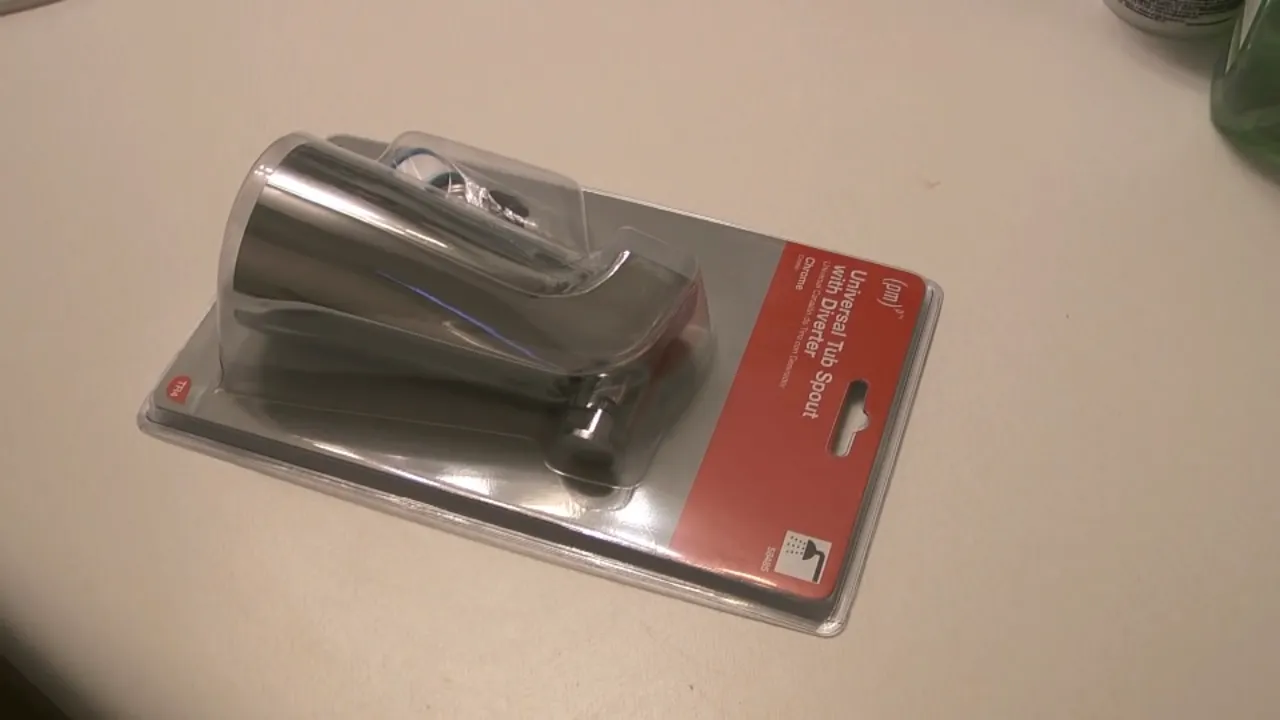To install a tub spout with diverter, first, remove the existing spout by twisting it counterclockwise. Then, apply plumber’s tape to the threads on the pipe stub, and thread the new tub spout onto the pipe by turning it clockwise until snug.
Understanding The Basics Of A Tub Spout With Diverter
What is a tub spout with diverter?
A tub spout with diverter is an essential component of a bathtub/shower plumbing system. It is designed to control the flow of water between the bathtub faucet and the showerhead. This versatile device allows you to easily switch between filling the tub and using the shower without the need for additional valves or controls.
Unlike a regular tub spout, which only dispenses water from the faucet, a tub spout with diverter features an extra mechanism that redirects the water flow to the showerhead when activated. This handy feature provides convenience and flexibility, as it allows you to enjoy the benefits of both functions through a single fixture.
How does it work?
The working principle of a tub spout with diverter is relatively straightforward. When the diverter valve is engaged, either by pulling up on a diverter knob or lever, or by pressing a button, the water flow is redirected from the spout to the showerhead. This diverts the water to the shower, allowing you to enjoy a refreshing shower experience.
When you’re done using the shower and want to return to using the tub faucet, simply disengage the diverter valve by pushing the knob or lever back down, or releasing the button. This will switch the water flow back to the spout, allowing you to fill the tub or use the tub faucet as usual.
The importance of a tub spout with diverter
A tub spout with diverter plays a crucial role in ensuring enhanced functionality and convenience in your bathroom. Here are a few reasons why it is important to have one in your bathtub/shower setup:
- Easy switching: With a tub spout with diverter, you can easily switch between the tub faucet and the showerhead, allowing for a seamless transition between soaking in the tub and taking a shower.
- Space-saving: By combining the functions of both a tub spout and a showerhead, a tub spout with diverter eliminates the need for additional fixtures, saving space in your bathroom.
- Cost-effective: Installing a tub spout with diverter eliminates the need to invest in separate components for the tub and shower, helping you save on plumbing costs.
Overall, understanding the basics of a tub spout with diverter is essential for making informed decisions when installing or upgrading your bathtub/shower system. The convenience, flexibility, and space-saving benefits of this device make it a valuable addition to any bathroom.
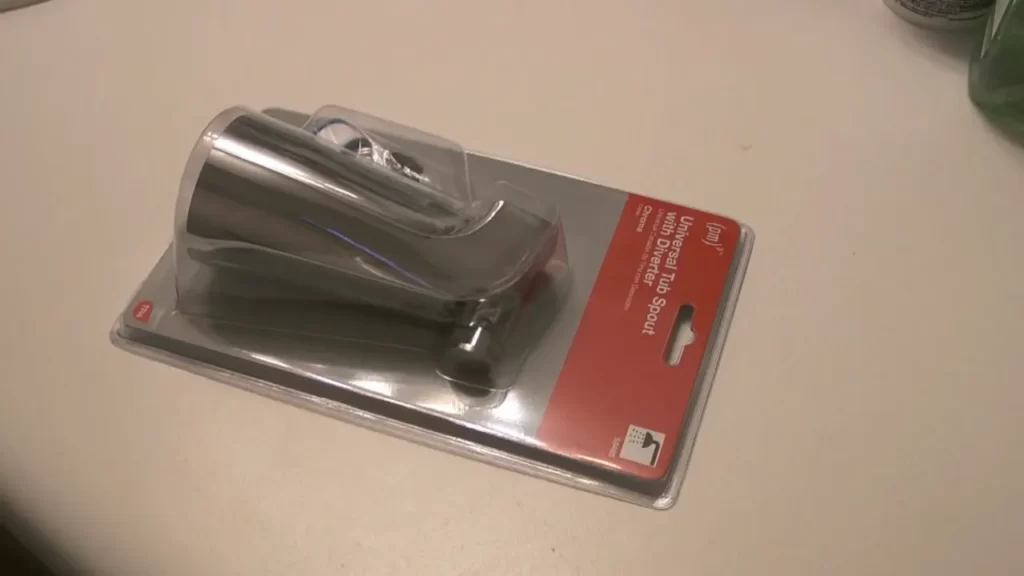
Preparing For Installation
Before you start installing a tub spout with diverter, it’s important to properly prepare and gather the necessary tools and materials. Also, you need to make sure that the water supply is turned off and the old tub spout is removed. In this section, we will guide you through the necessary steps to prepare for a successful installation.
Gathering the necessary tools and materials
Make sure you have the following tools and materials ready before you begin the installation process:
| Tools: | Materials: |
|
|
Turning off the water supply
Before you remove the old tub spout, it’s crucial to turn off the water supply. This will prevent any unwanted water flow and potential damage during the installation process.
To turn off the water supply, locate the main water shut-off valve for your house. This is usually located in the basement or utility room. Turn the valve clockwise until it is fully closed. Once the water supply is shut off, you can proceed with removing the old tub spout.
Removing the old tub spout
The next step is to remove the old tub spout. This can vary depending on the type of spout you have, but here are some general steps to follow:
- Inspect the tub spout to identify how it is attached. It may be secured with a set screw, threaded on, or have a slip-on connection.
- If there is a set screw, use a screwdriver to loosen and remove it.
- If the tub spout is threaded on, use an adjustable wrench to turn it counterclockwise until it comes off.
- If it has a slip-on connection, you may need to twist or pull firmly to remove it.
- Once the old tub spout is removed, inspect the pipe for any debris or buildup. Clean it if necessary.
Now that you have successfully prepared for the installation by gathering the necessary tools and materials, turning off the water supply, and removing the old tub spout, you can move on to the next steps to install the new tub spout with diverter.
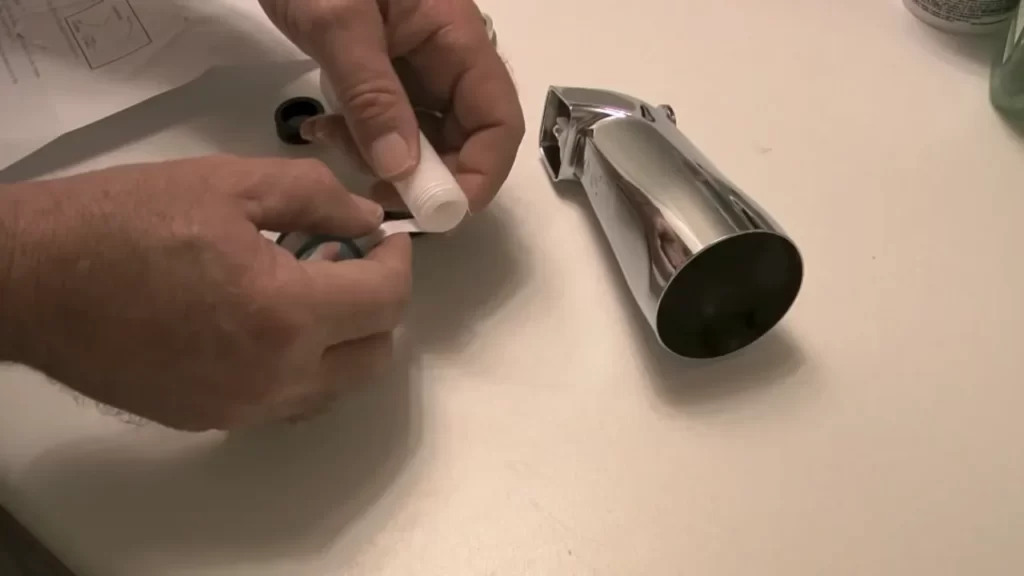
Installing The Tub Spout With Diverter
Installing a tub spout with a diverter is an essential task for anyone looking to enjoy the convenience of a shower in their bathtub. The diverter valve allows you to easily switch the flow of water between the spout and the showerhead. In this guide, we will walk you through the step-by-step process of installing a tub spout with a diverter, ensuring a secure and leak-free connection.
Determining the type of diverter
Before you begin the installation process, it is crucial to determine the type of diverter you have. There are generally two types of diverters – a lift-type diverter and a pull-down diverter. A lift-type diverter is a small knob or lever located either on the tub spout or the wall, while a pull-down diverter is a mechanism integrated into the tub spout itself. Identifying the type of diverter will guide you in positioning and aligning the new tub spout.
Positioning and aligning the new tub spout
Once you have determined the type of diverter, it is time to position and align the new tub spout properly. Start by removing the old tub spout by turning it counterclockwise. Use the appropriate tools, such as a pipe wrench or pliers, if necessary. After removing the old spout, clean the pipe threads to ensure a smooth connection for the new spout.
When positioning the new tub spout, make sure to align it with the diverter mechanism. The lift-type diverter should have an opening or slot where the spout’s knob or lever will fit. For pull-down diverters, the spout should have the appropriate connection to engage with the integrated mechanism. Take your time to ensure the proper alignment to guarantee a functional diverter.
Attaching the tub spout securely
Now that you have positioned and aligned the new tub spout, it is time to attach it securely. Apply plumber’s tape on the pipe threads to create a tight seal and prevent leaks. Wrap the tape in a clockwise direction and make sure to cover all the threads. Insert the spout onto the pipe and twist it clockwise until it is snug. Be careful not to overtighten as it may cause damage.
Sealing and tightening the connections
Once the tub spout is securely attached, it is essential to seal and tighten the connections to ensure a leak-free installation. Use a wrench or pliers to tighten the spout’s mount or screw it into place, depending on its design. Make sure it is firmly connected without any wobbling or looseness.
To further secure the connections, use a silicone or caulk sealant around the base of the tub spout. Apply it evenly and smooth it out with a damp cloth or your finger. This sealant will prevent water from seeping behind the spout and causing damage to your wall or tub surround.
By following these steps and properly installing the tub spout with diverter, you can enjoy the convenience and versatility of both a tub spout and showerhead in your bathtub. Remember to always consult the manufacturer’s instructions for your specific product and seek professional help if needed. With a secure and well-functioning tub spout with a diverter, your bathing experience will be more enjoyable than ever.
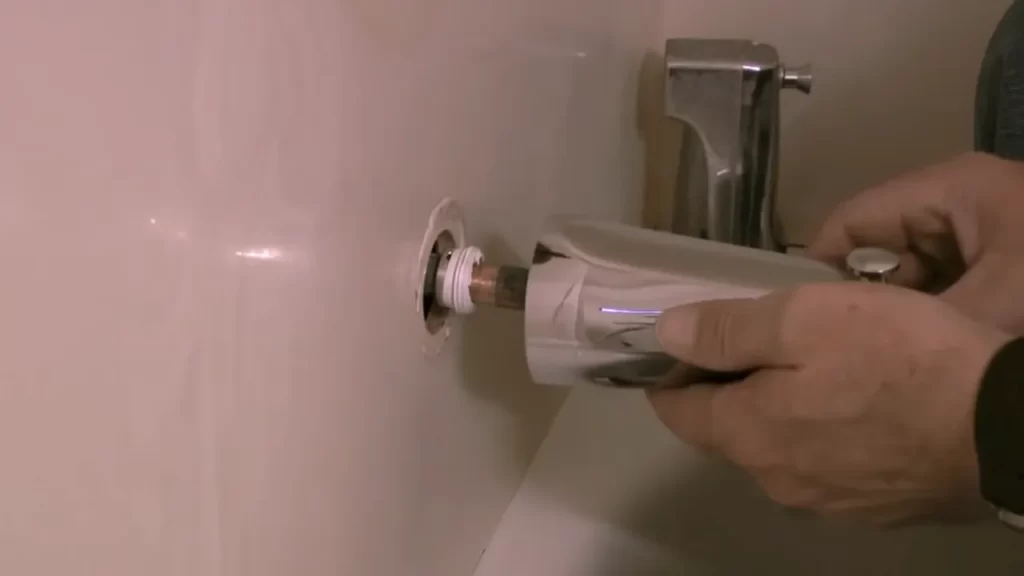
Testing And Troubleshooting
Turning on the water supply
To test the newly installed tub spout with diverter, the first step is to turn on the water supply. This can be done by locating the main water shut-off valve and fully opening it. This ensures that the water pressure is sufficient for the tub spout to function properly. Take a moment to listen for any strange noises or vibrations that may indicate an issue with the water supply. Once the water is flowing steadily, it’s time to move on to the next step.
Checking for leaks
After turning on the water supply, it is important to check for any leaks around the tub spout with diverter. Carefully inspect the area where the spout connects to the wall and look for any signs of water dripping or pooling. A small leakage can lead to bigger problems if not addressed promptly. If you notice any leaks, take note of their location and try tightening the connections using a wrench. If the leaks persist, you may need to replace faulty parts or seek professional assistance.
Adjusting the diverter if necessary
Once the water supply is on and leaks have been addressed, it’s time to test the functioning of the diverter. The diverter is responsible for redirecting the water flow between the tub spout and the showerhead. To check if it is working properly, turn on the water and engage the diverter by pulling up or pushing down the diverter switch or knob, depending on the design. Observe the water flow and ensure that it is diverting correctly. If the water is not being directed to the desired outlet, adjustments may need to be made. Refer to the manufacturer’s instructions or seek professional advice if necessary.
Testing and troubleshooting your newly installed tub spout with diverter is an essential part of the installation process. Taking the time to ensure that the water supply is flowing smoothly, checking for leaks, and adjusting the diverter if necessary can help prevent potential problems in the future. By following these steps, you can enjoy a properly functioning tub spout with diverter and a relaxing bathing experience.
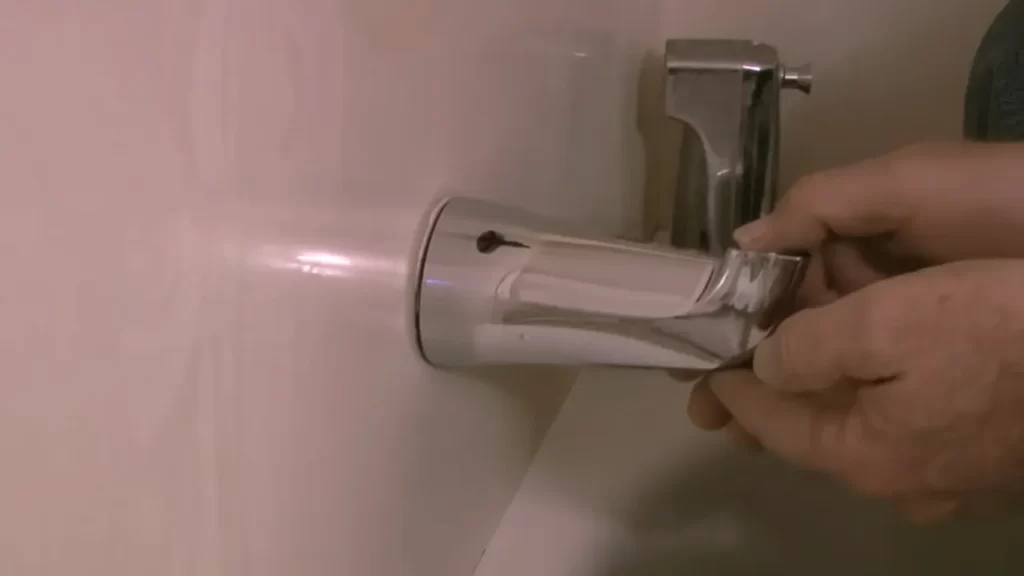
Additional Tips And Considerations
Choosing the Right Tub Spout with Diverter
When it comes to choosing the right tub spout with diverter, it’s important to consider a few factors. Firstly, you should take into account the style and design that will best complement your bathroom decor. Whether your bathroom has a modern or traditional theme, you can find a tub spout with diverter that suits your aesthetic preferences.
Additionally, you’ll need to determine the type of installation that is compatible with your existing plumbing system. This involves considering whether you require a wall-mounted or deck-mounted tub spout. Take measurements to ensure a proper fit, as this will prevent any potential leaks or water damage in the future.
Another important consideration is the material of the tub spout. Common materials include brass, stainless steel, chrome, and plastic. Each material has its own benefits and drawbacks, so be sure to weigh these factors before making your decision. Durability, resistance to corrosion, and ease of cleaning should all be taken into account.
Maintaining and Cleaning the Tub Spout
Cleaning your tub spout regularly is essential for maintaining its appearance and functionality. Over time, mineral deposits and soap scum can accumulate, causing the spout to clog or lose its shine. Cleaning the tub spout is a simple and quick process that can be done using common household items.
First, ensure the water supply to the tub is turned off. Then, use a soft cloth or sponge and a mild soap solution to gently clean the surface of the tub spout. Be careful not to scratch or damage the finish. For stubborn stains or deposits, you can use a mixture of equal parts white vinegar and warm water. Apply the solution to the affected areas and let it sit for a few minutes before scrubbing gently with a brush or cloth. Rinse thoroughly with water to remove any residue.
Regular maintenance of the tub spout is also important to prevent any potential leaks or malfunctions. Check the spout for any signs of wear or damage, such as loose connections or cracks. If you notice any issues, it’s best to address them promptly to avoid further damage.
Common Problems and Troubleshooting Solutions
Despite proper installation and maintenance, tub spouts with diverters can encounter some common problems. Here are a few troubleshooting solutions:
| Problem | Troubleshooting Solution |
|---|---|
| Low water pressure | Check for any blockages or debris in the diverter valve. Clean or replace if necessary. |
| Water leaking from the spout | Inspect the spout for any loose connections. Tighten as needed. If the leak persists, it may be time to replace the spout. |
| Inconsistent temperature control | Check the diverter valve for any damage or malfunction. If necessary, replace the valve to ensure proper temperature control. |
By being aware of these common problems and having the appropriate troubleshooting solutions at hand, you can easily address and resolve any issues that may arise with your tub spout with diverter.
Frequently Asked Questions
How Do You Replace A Tub Spout With Diverter?
To replace a tub spout with a diverter, simply unscrew the old spout, clean the pipe threads, apply plumber’s tape, and screw on the new spout. Make sure it’s tight and functioning properly.
How Do You Put A Tub Spout Back On?
To put a tub spout back on, follow these steps: 1. Remove any debris or old sealant from the pipe by cleaning it thoroughly. 2. Apply a layer of plumber’s tape or thread sealant on the threads of the pipe.
3. Slide the tub spout on the pipe and rotate it clockwise until it is tight. 4. Use a wrench to tighten the spout securely, but be careful not to over-tighten. Note: It is always recommended to consult a professional plumber if you are unsure or need assistance.
How Do You Install A Slip Fit Tub Spout?
To install a slip fit tub spout, follow these steps: 1. Remove the old spout by loosening the set screw. 2. Apply plumber’s tape to the threaded end of the new spout. 3. Slide the spout onto the pipe and tighten the set screw.
4. Test for leaks by turning on the water. 5. Enjoy your new tub spout!
What Is The Difference Between Diverter And Non Diverter Tub Spout?
A diverter tub spout is used to divert water from the tub faucet to the showerhead. A non-diverter tub spout does not have this feature and only allows water to flow through the tub faucet.
Conclusion
Installing a tub spout with diverter is a simple and straightforward process that can enhance your bathing experience. By following the steps outlined in this blog post, you can easily install your tub spout with diverter and enjoy the convenience of easily switching between your bath and shower.
Remember to choose a high-quality tub spout and follow the manufacturer’s instructions for best results. Happy installing!
